Rifle battle cruisers. Unrealized projects
Соединенные Штаты Америки
History the creation of the US linear cruisers began well and ... oddly enough, it ended well, although it should be noted that the merits of the American admirals and designers in this there is no.
As a matter of fact, the idea of a battle cruiser was formulated in the USA as early as 1903, when Naval College in Newport came up with the idea of an armored cruiser that had weapons and armor comparable to the squadron, but exceeding the latter in speed. It was assumed that such ships should catch up and bind the enemy battleships by combat until the main forces approached, so the cruiser should be equipped with 305-mm artillery and provide protection against it. In such views, the experience of the Spanish-American war was very well viewed, when the battleships of the United States did not keep pace with the main forces of Admiral Servers. At the same time, the success of the armored cruiser “Brooklyn”, which caught up and shot the enemy ships, was largely due not to the quality of its design, but to the inability of the Spanish gunners to hit the target. If the Spaniards had a training comparable to their American "colleagues", then ... no, in the battle of Santiago de Cuba, they would hardly have won in this case, but they could well damage or even sink Brooklyn and save at least half of their armored squadron from destruction. Well, American sailors should pay tribute - a remarkable success at sea did not blind them, and did not eclipse the shortcomings of the materiel of US armored cruisers.
The findings of the Naval College could only be welcomed - the Americans initially saw the battle cruiser as a ship to participate in the battle of the main forces, their views turned out to be very close to the German ones, and it was the Germans who were able to create the most successful battle cruisers of the world in the period before the First World War. . At the same time, the first US projects were, perhaps, even more advanced than their German counterparts.
While German shipbuilders and admirals achieved the high speed of their battlecruisers by weakening the protection and reducing the main caliber in comparison with the battleships being built simultaneously, and for some time they could not decide on equal displacement of battleships and battlecruisers, nothing in the United States It was. Their first draft of the battle cruiser was an analogue of the Wyoming dreadnought (26 000 t, 12 * 305-mm guns in six two-turrets, 280-mm armor and 20,5 knots speed)
But with a narrower and longer hull, to obtain a high speed hull, the length of the battle cruiser should have reached 200 m, which on 28,7 m exceeded that of the Wyoming. Armament was weakened, but quite enough to fight with battleships - 8 * 305-mm guns in four towers, and the speed had to reach 25,5 knots. At the same time, the reservation was not only kept at the level of “Wyoming”, but perhaps we could even say that it was superior to it. Although the thickness of the armor, decks, barbets, etc. remained at the level of the battleship, but the length and height of the main armored belt should have surpassed those of the "Wyoming". In this case, the displacement of the battle cruiser was to be 26 000 T, that is, to be equal to the corresponding battleship.
Conceptually, the project turned out to be extremely successful for its time (the exact date of development is unknown to the author, but probably it is 1909-1910), but in those years the United States gave priority to the construction of dreadnoughts, therefore the “American Dreflinger” was never laid. However, this project was quickly outdated, but it was not through the fault of its creators - it was just the change of the “305-mm” battleships that led to the era of super-dreadnoughts ...
The next project of a US cruiser, whether embodied in metal, would definitely claim to be the world's best battle cruiser — supposed to be its analogue to the Nevada battleship, keeping the last reservation, but reducing armament to 8 * 356-mm guns and ensuring the ship’s speed in 29 nodes. Taking into account the fact that the TK for such a ship was presented in 1911 g, and it was supposed to lay it in 1912 g, such a battlecruiser would definitely leave far behind all British, German and Japanese battlecruisers.
Of course, for such TTX something had to be paid: the price was the increase in displacement over 30 000 t (for those years - extremely much), and also not the greatest, by American standards, the range of “all” 5 000 miles with the economic course. And if the Americans were ready to agree with the first (displacement growth), the second was completely unacceptable for them. On the one hand, of course, you can blame the US admirals - for their European counterparts the 5 000 miles looked more or less normal, but the Americans, already looking to Japan, as a future enemy at sea, wanted to get ships with truly ocean range and less than 8 000 miles were not agree.
As a result of the above reasons, several variants of the design of the linear cruiser were presented for consideration, in which, all other things being equal, the thickness of the armor consistently decreased from 356 mm to 280 and 203 mm. And only in the latter case the range of 8 000 miles was reached. As a result, the American sailors preferred the latter option and ... again they put the case on the back burner, considering the construction of dreadnoughts to be a priority. However, it was here, making a choice in favor of the course range due to the critical weakening of the reservation, the Americans forever left the projects of the best for their time ships of this class, to an amazing “something” called the battle cruiser Lexington.
The thing is that in 1915, when the American fleet again returned to the idea of building battlecruisers, admirals completely changed their views on the role and place of this class of ships in the structure fleet. The interest in battlecruisers fueled the Battle of Dogger Banks, which demonstrated the potential of ships of this class, but it is surprising that now the Americans have adopted a new concept of battlecruiser, which is completely different from either the English or the German. According to the plans of US admirals, linear cruisers were to become the backbone of the “35-node” formations, which also included light cruisers and destroyers capable of reaching the speed indicated above.
Without a doubt, the technological level of that time made it possible to bring the speed of large ships to the 35 nodes, but, of course, only at the cost of huge sacrifices with other martial qualities. But for what? This is completely unclear, because some sane concept of using “35-node” connections has never been born. In general, the following happened: in an effort to gain super speed in 35 nodes, the Americans were not ready to sacrifice their firepower and range: therefore, we had to reduce the booking and survivability of the battle cruiser to almost zero. The ship received 8 * 406-mm guns, but its body was very long and narrow, which excluded some serious PTZ, and the booking did not exceed 203 mm!
But surprisingly different. Already knowing that the British had laid down the “Hood” and presenting its combat capabilities (the design documentation of the last British battle cruiser was transferred to the United States), and having received from the British an analysis of the damage to their ships received during the Jutland battle, the concept of a battle cruiser is maximum speed and firepower with a minimum of protection. In essence, the designers of the United States only retreated - understanding the insignificance of underwater protection, they increased the width of the hull to 31,7 m, providing for a PTZ more or less decent for those years. The speed had to be reduced to 33,5 knots, but the ship remained utterly awkward - with a displacement above 44 000 T (more than Hud by approximately 3 000 T!) And armed in 8 * 406-mm, its sides were protected only 178 mm armor! The forehead of the towers reached 279 mm, barbettes - 229 mm, chopping - 305 mm. This level of booking was somewhat superior to the Ripals and Rinaun before upgrading them, but, of course, it was completely inadequate to act against any heavy ship of the world, and there is no doubt that the Lexingtons (this was the name of the series of American battle cruisers) categorically inferior to “Hood” in terms of protection, and in terms of the overall balance of the project. In general, the construction of six Lexington battlecruisers was completely unjustified by any tactical considerations, contrary to world experience gained during the First World War, and would be a huge mistake of American shipbuilding ... if these ships were completed in their original designation.
That just did not happen. In essence, the following happened - after learning the tactical and technical characteristics of the post-war British and Japanese ships, the Americans realized that their newest battleships and battlecruisers, in general, were no longer at the peak of progress. More perfect and large ships were required, but it was expensive, and besides, they could not pass through the Panama Canal and all this created enormous problems even for the first economy of the world, which after the First World War was the United States. Therefore, US President W. Garding, who came to power in 1920, initiated a conference on the reduction of naval armaments, which became famous for the Washington Maritime Agreement, during which the United States, among other commitments, also refused to complete the construction of six Lexingtons. At that time, the average technical readiness of the first and last American battlecruisers was on average about 30%.
By itself, the rejection of the construction of huge and extremely expensive, but completely out of line with the requirements of modern maritime war, US linear cruisers can already be considered a success, but this is not why the end of the Lexington was successful. As is known, two ships of this type were nevertheless introduced into the US Navy, but already by ships of a completely different class - aircraft carriers. And, I must say, “Lady Lex” and “Lady Sarah,” as American sailors called aircraft carriers Lexington and Saratoga, became, perhaps, the most successful aircraft carriers in the world rebuilt from other large ships.
This was facilitated by some design solutions that looked somewhat strange on the battlecruisers, but quite appropriate on aircraft carriers, which allowed some historians even to put forward the version that the Americans had laid down the possibility of such a restructuring in the project. According to the author of this article, this version looks very doubtful, because at the design stage of Lexington it was hardly possible to assume the success of the Washington agreement, but it is impossible to completely deny this version. In general, this story is still waiting for its researchers, well, we can only state that despite the completely absurd TTX linear cruisers of the Lexington type, the history of designing US linear cruisers led to the emergence of two remarkable, by prewar standards, aircraft carriers.
With which we congratulate the US Navy.
Japan
After the United Fleet replenished four Congo-class battlecruisers, three of which were built at the same Japanese shipyards, the Japanese focused their efforts on building battleships. However, after the Americans voiced their new shipbuilding program in 1916, the 10 battleships and the 6 battlecruisers, the Mikado subjects opposed theirs, in which, for the first time in recent years, the battle cruisers were present. We will not now focus on the features of the shipbuilding programs in Japan, we only note that 1918 g finally adopted the so-called program "8 + 8", according to which the sons of Yamato had to build 8 battleships and 8 battle cruisers ("Nagato" and "Mutsu" included in it, but the previously built 356-mm battleships and battlecruisers - no). The first was to lay two battleships of the Kaga type and two battlecruisers of the Amagi type.
What can be said about these ships? The Toza and Kaga battleships became an upgraded version of the Nagato, which improved “little by little” - the firepower was enhanced by adding a fifth main caliber tower, so the total number of 410-mm guns was reduced to 10. The reservation also received some reinforcement - although the Kaga armor-belt was thinner than that of the Nagato (280 mm vs. 305 mm), but it was inclined, which completely equalized its reduced armor resistance, but the horizontal defense became slightly better.
However, in terms of its combat qualities, the Kaga was a rather strange sight for the post-war battleship. His body armor was somewhat in line with, and in some way inferior to that of the battle cruiser “Hood”. However, as we wrote earlier, the “Hood” was built in the era of 380-381-mm dreadnoughts and, although its booking was very perfect for its time, it only to a limited extent protected the ship from the shells of these guns.
At the same time, by the time the Kaga and Toza battleships were being designed, naval progress had taken the next step, moving to even more powerful 16-inch guns. The magnificent British 381-mm artillery system accelerated 871 kg projectile to the initial speed 752 m / s, but the American 406-mm gun mounted on the Maryland-type battleships fired 1 016 kg with a projectile with an initial speed 768 m / s and the Japanese The 410-mm gun fired a projectile weighing exactly one ton with an initial speed of 790 m / s., That is, the superiority in power of the 406-mm guns was 21-26%. But with increasing distance, the British fifteen-inch was losing more and more noticeably to the Japanese and American guns in armor penetration - the fact is that the heavier projectile slows down its speed, but the speed of the sixteen-inch guns was initially higher ...
In other words, the Hud booking was to a limited extent protected from 380-381-mm projectiles, and (at best!) It was very limited - from 406-410 mm. It is safe to say that, although in certain circumstances the “Hood” could withstand the hit of 406-mm projectiles, its protection was not intended and was too weak for this. And given the fact that the Kaga was armored worse than the Hud, we can state a certain parity of the offensive-defensive qualities of these ships. “Hood” is worse armed, but somewhat better protected, although it is not able to withstand long shelling of 410-mm projectiles. At the same time, the booking of his opponent (280 mm armor belt tilted, 102-160 mm armored formwork with 76-102 mm bevels) is quite vulnerable to British 381-mm "green fight". That is, the protection of both ships from the shells of their "opponents" looks equally weak, but the Japanese battleship nevertheless, due to a larger number of trunks of the main caliber and heavier projectiles, had more chances to strike critical for Hud more quickly. But the British ship was much more fast (31 ties against 26,5 bonds), which gave him certain tactical advantages.
In general, it can be stated that the Japanese battleships of the Kaga type combined very powerful weapons and reservations, unable to resist these weapons. The British themselves recognized the protection of “Khud” as completely inadequate for the increased level of threats, and saw the need to strengthen it in every way (which was done in the post-war projects, which we still reach). And we must not forget that the “Hood” was, after all, a ship of military construction. But what did the Japanese count on by laying a battleship with weaker protection after the war? The author does not have the answer to this question.
By and large, Kaga-type battleships were a kind of battlecruiser, with very powerful weapons, completely inadequate reservations and a very moderate speed for their time, thereby avoiding “gigantism” - the ship managed to be laid down in less than 40 thousand. tons of displacement (although it is unclear whether this is a standard or normal displacement, the author, however, is inclined to the last option). Of course, the Kaga was better armed and much faster than the American Maryland, but the lack of sane protection against 406-mm shells badly spoiled the matter. In addition, the “Kaga” analogue should be considered not “Maryland”, but “South Dakota” type battleships (1920 of, of course, not pre-war) with their dozen 406-mm guns, 23 speed knots and 343 mm on-board armor.
So, why this is such a long introduction to the battleships, if the article is devoted to the battle cruisers? Everything is very simple - while creating the Amagi-type battlecruisers, the Japanese diligently copied the British concept - with a slightly larger displacement compared to the Kaga battleships (according to various 41 217 - 42 300 t vs 39 330 t), the Japanese battlecruisers had so much the same powerful weapons (all the same 10 * 410-mm guns), higher speed (30 knots versus 26,5 knots) and significantly weaker armor. The main armor belt got a “lowering” from 280 to 254 mm. Bevels - 50-80 mm versus 76 mm (according to other data, "Kaga" had bevels 50-102 mm). The thickness of the armor was 102-140 mm versus 102-160 mm. The maximum thickness of the barbets of the main-caliber towers “moved out” from 356 to 280 mm.
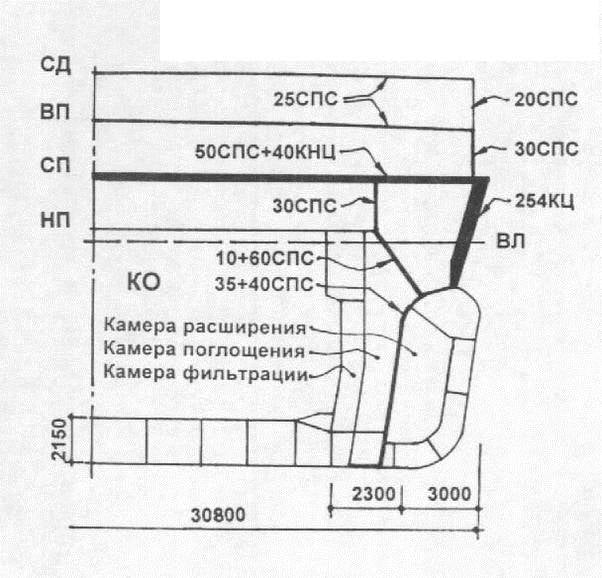
“Amagi” type battlecruisers would have looked great in the battle of Jutland, and there is no doubt that if Admiral Beatty had such ships, the Hipper 1 reconnaissance group would have to be salty. In battles with the battle cruisers of Hohzeeflot, Amagi would have had an overwhelming firepower, while their defense was, in general, quite sufficient against 305-mm projectiles, although in principle Derflinger and Lyutzov still had some chance to snap back. . Nevertheless, the booking of the Japanese battlecruisers did not guarantee absolute protection against 305-mm armor-piercing shells and in some situations could have been punched by them (although with great difficulty, there were still chances for this).
However, the protection capabilities of Amagi against full-fledged 343-356-mm armor-piercing shells are highly questionable, against 380-381-mm - negligible, against 406-mm - completely absent. So, oddly enough, comparing the booking of Japanese battlecruisers with the American Lexington, we can talk about some parity - yes, formally Japanese armor is slightly thicker, but in fact neither one nor the other from 406-410-mm projectiles of "opponents" not defended at all. Extremely thin eggshell armed with jackhammers ...
Without a doubt, the construction of such ships was not justified for Japan, which, as we know, was fairly constrained in means and capabilities compared to its main competitor - the United States. Therefore, the Japanese should consider the Washington Maritime Agreement as a gift to Amaterasu who protected the sons of Yamato from creating completely useless warships.
"Akagi" and "Amagi" were to be converted into aircraft carriers, but "Amagi" suffered greatly during the earthquake, being still unfinished and went for scrap (the unfinished battleship "Kaga" was converted instead). Both of these ships gained fame in the battles of the initial stage of the Pacific War, but nevertheless it should be recognized that technically these ships were inferior to the Lexington and Saratoga - however, this is a completely different story ...
Germany
It must be said that all the projects of the “gloomy Teutonic genius” after “Ersatz Yorke” are nothing more than pre-sketch sketches carried out without much enthusiasm. In February-March, 1918 r absolutely everyone in Germany understood that no laying of heavy ships would take place before the end of the war, and no one could predict what would happen after it ended, but the situation on the fronts was getting worse and worse. Therefore, there was no “struggle of opinions” of admirals and designers, projects were largely created “on the machine”: perhaps, therefore, the latest sketches of the German battle cruisers had much in common.
So, for example, they all armed themselves with super-powerful 420-mm main-caliber guns, but the number of guns differed - 4; 6 and 8 guns in two-gun turrets. Probably the most balanced project on 6 was such guns - it is interesting that the two towers were located in the stern, and only one - in the bow. Despite the seeming extravagance, such an arrangement of towers had its advantages - in the stern two towers separated the engine rooms, and they could not be incapacitated by hitting one projectile, moreover, the similar arrangement of the towers gave the best firing angles compared to the “two in the bow” - one in the stern.
Vertical booking was traditionally powerful - in the Mackensen and Ersatz York projects, the Germans, by the large Hamburg account, copied Dreflinger's defense, limiting it to a slight improvement (and in some cases to deterioration), and only now, finally , made a step that seemed promising for a long time and brought the thickness of the armored belt to 350 mm, thinning to the bottom edge to 170 mm. Above the 350 mm area, the 250 mm was located, and a second 170 mm armor belt was provided. The main-caliber barbets of the caliber had 350 mm of armor above the upper deck, 250 mm for the 170 mm second belt and 150 mm for the 250 mm section of the main armor belt. Interestingly, the 350 mm armor belt was the only side defense in the sense that it continued in the bow and stern much further than the barbets of the main-caliber turret installations, but where it was completed, the board had no protection. The normal displacement of this battlecruiser was close to the 45 000 t and it was assumed that he could develop the 31 node.
It seems to be possible to say that the Germans "loomed" a very well balanced ship, but, unfortunately, the project had an Achilles heel, its name was the horizontal defense of the ship. The fact is that (as far as the author knows) its base was still made up of an armored deck 30 mm thick without bevels, only in the cellar area reaching 60 mm. Of course, taking into account other decks, the horizontal protection was somewhat better (at Ersatz York, it was 80-110, possibly 125 mm, although the latter is doubtful), but remaining at the level of previous battlecruisers, it was of course completely inadequate.
In general, we can say that the development of the battle cruisers, which were supposed to follow the "Ersatz York", froze at a stage that does not allow how to assess the direction of German naval thought. We see a desire to strengthen the vertical protection, speed and power of the main caliber, but if Germany had not lost the First World War and resumed the construction of battle cruisers after it, then the final project would most likely be very different from the pre-sketched options that we developed at the beginning of 1918.
United Kingdom
Alas, the volume of the article did not leave us room for the analysis of the battle cruisers of the project "G-3". However, it may be for the best, because the latest project of a British ship of this class is completely worthy of a separate material.
Продолжение следует ...
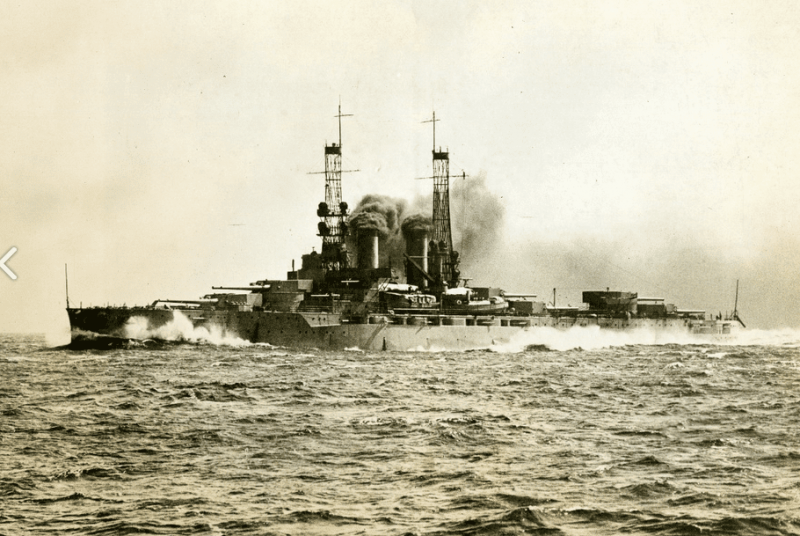
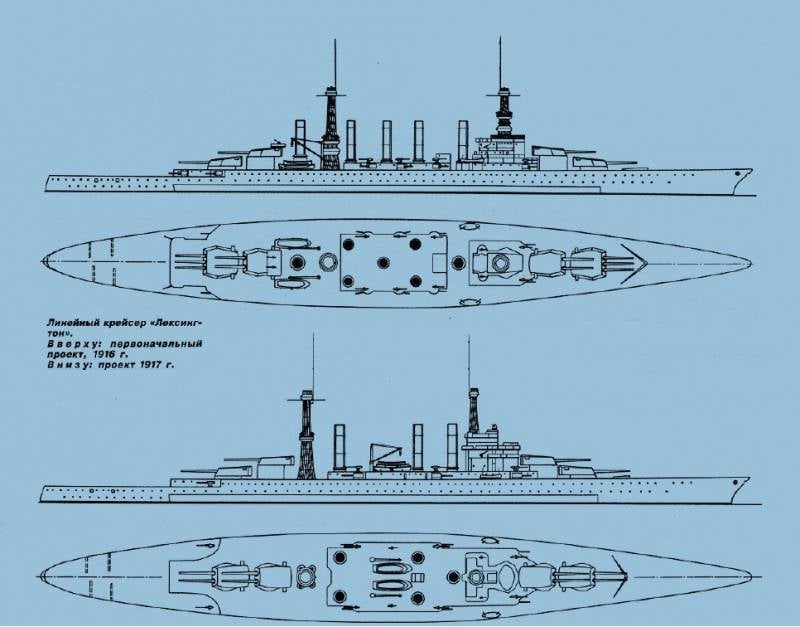
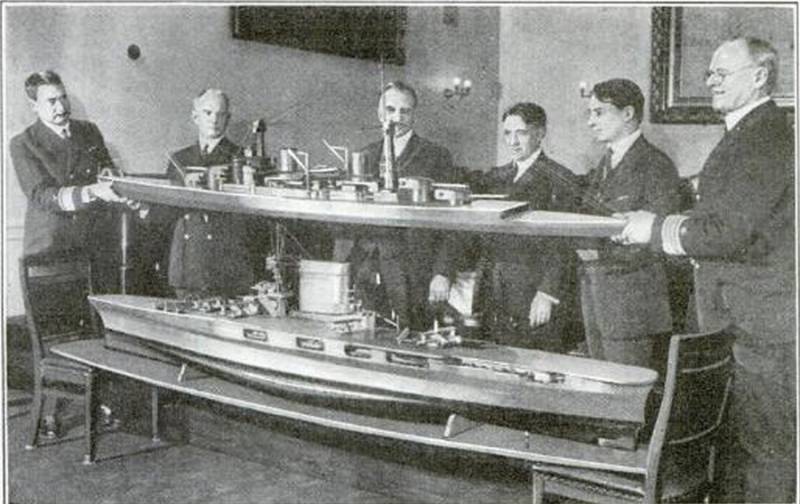
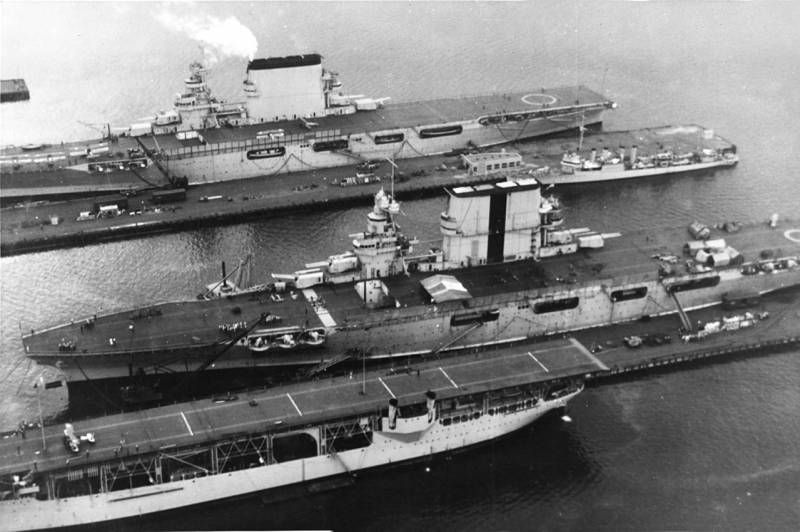
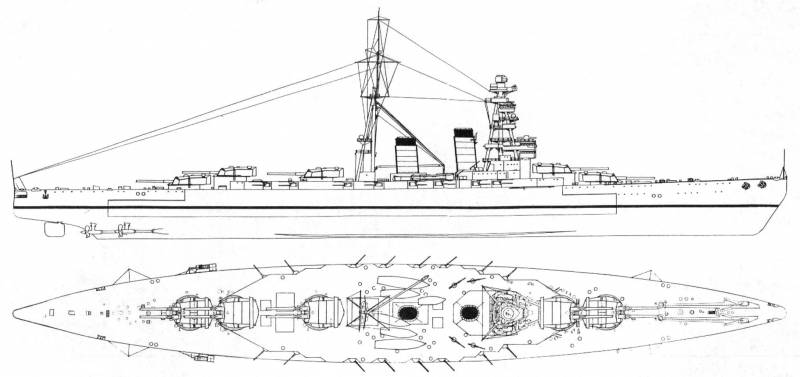
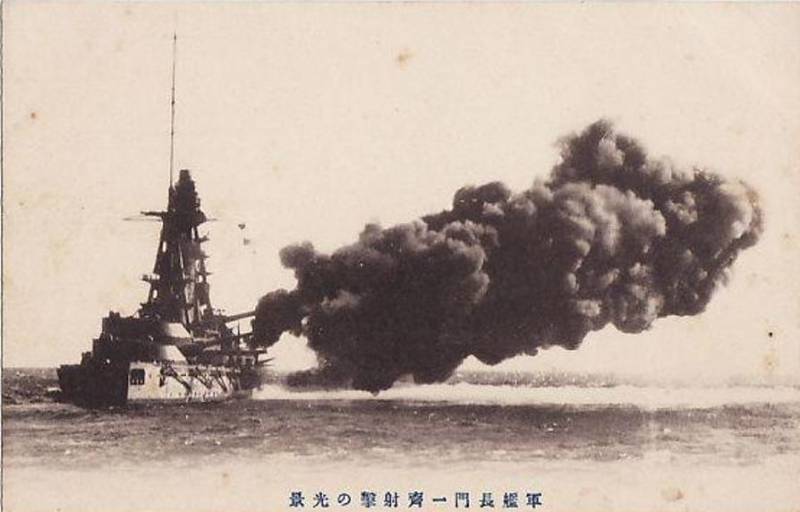
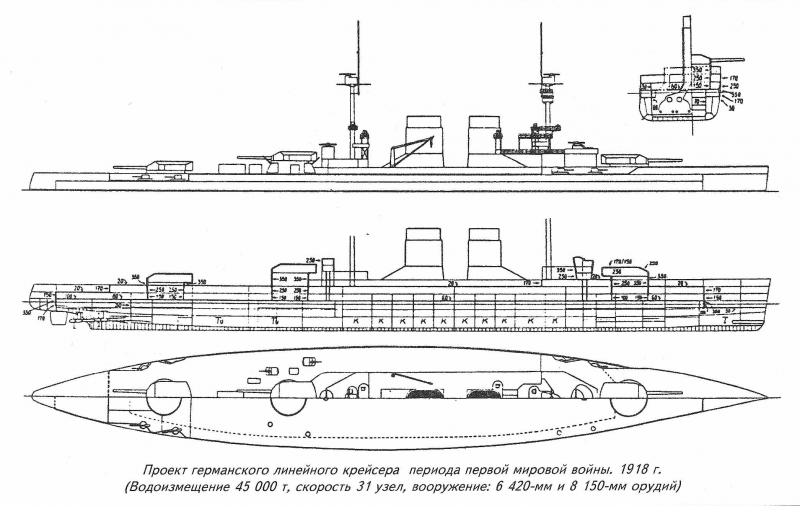
Information